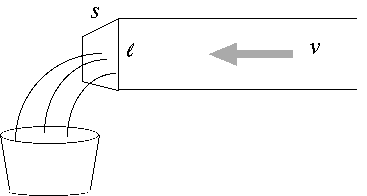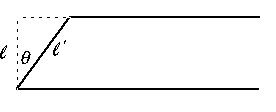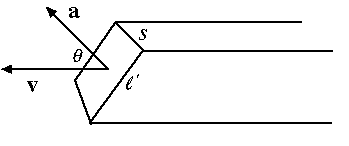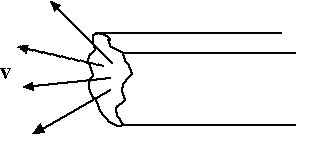This problem is meant to help you understand the notion of the flux of a vector field through a surface.
a) Suppose water flows with speed v down a rectangular pipe of crossectional lengths s and ℓ, as shown in the figure below. What is the rate Φ = volume per unit time, at which water accumulates in the bucket?

b) Now we slice the end of the pipe off at some angle θ , as in the figure below. This doesn't change Φ of course. Express your formula for Φ in terms of the dimensions s and ℓ' of the end, and the angle of tilt θ.

c) Write teh formulat for Φ more compactly, in terms of the vector area a of the end and the vector velocity v, as shown in the figure below.

d) What if the velocity varied (in magnitude and/or direction) from point to point, and the end of the pipe were cut in some arbitary way, as in the figure below. How would you then compute Φ in this case?
